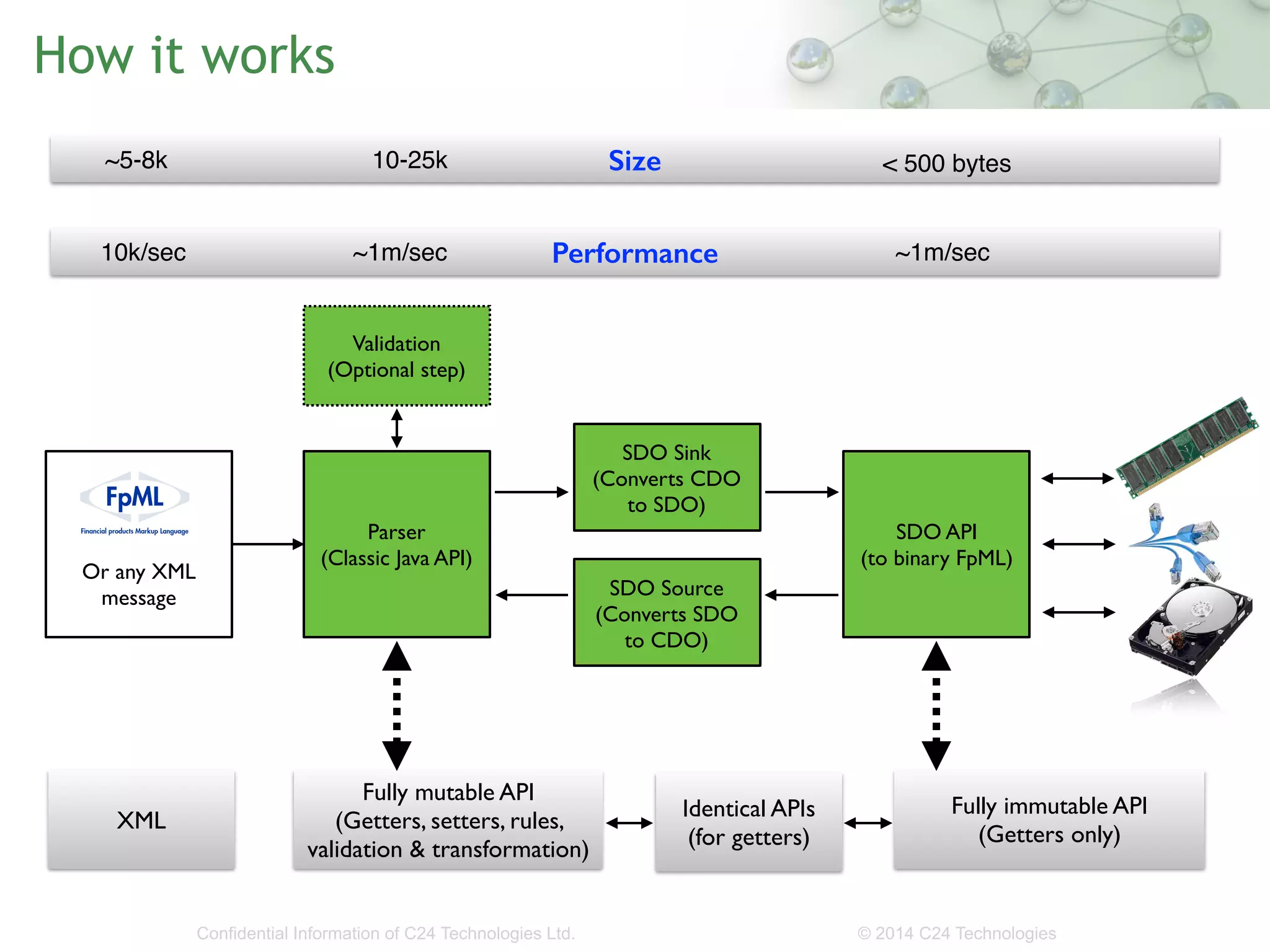The document discusses the inefficiencies of Java in data storage, highlighting how Java objects can result in increased memory usage due to their bloated structure compared to simpler formats such as CSV. It suggests the use of binary representations to compact data storage and improve performance, especially when handling large volumes of data. Ultimately, the document aims to demonstrate how adopting binary implementations can lead to significant reductions in memory usage and faster serialization times while maintaining the same API functionality.
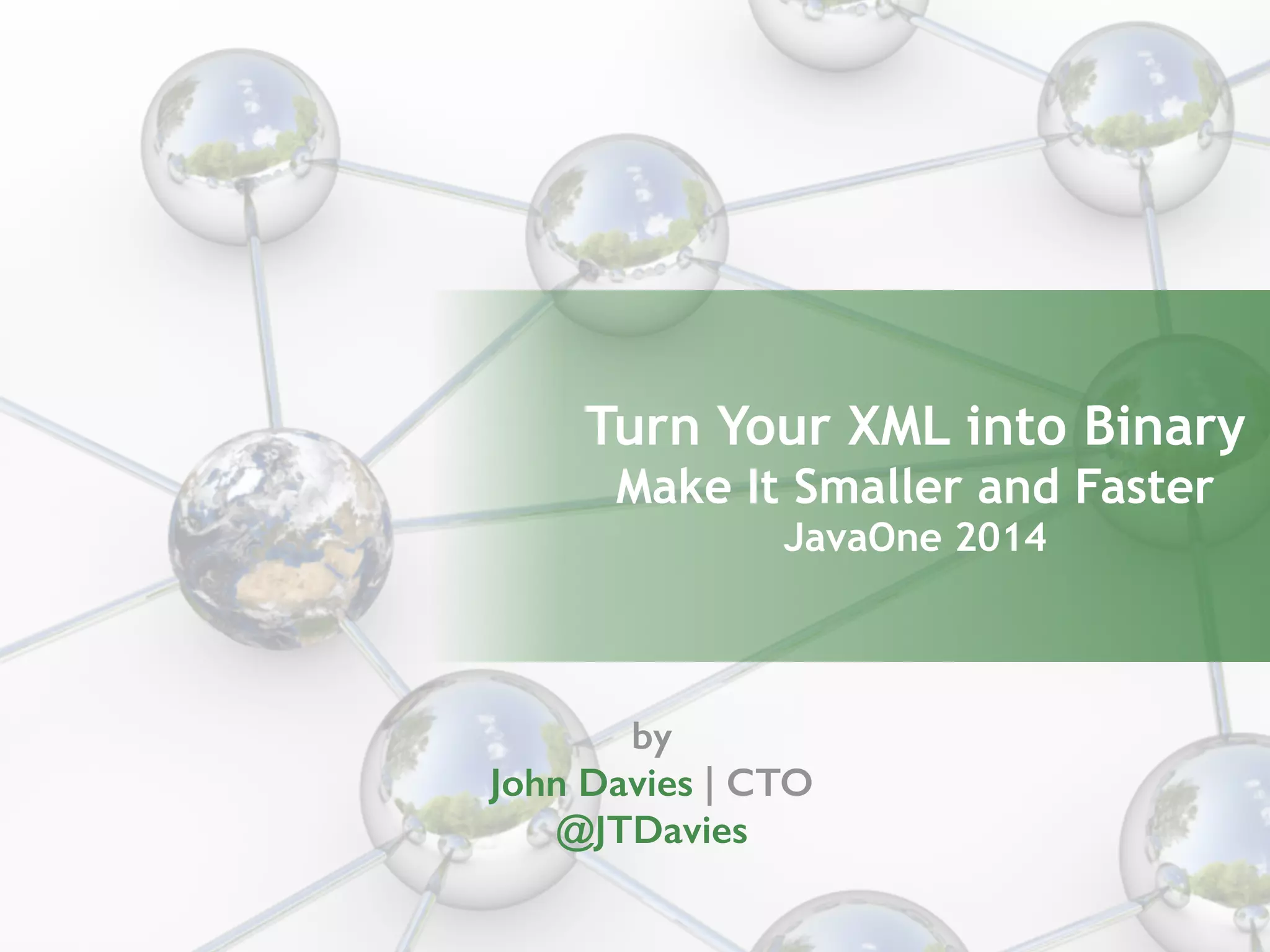
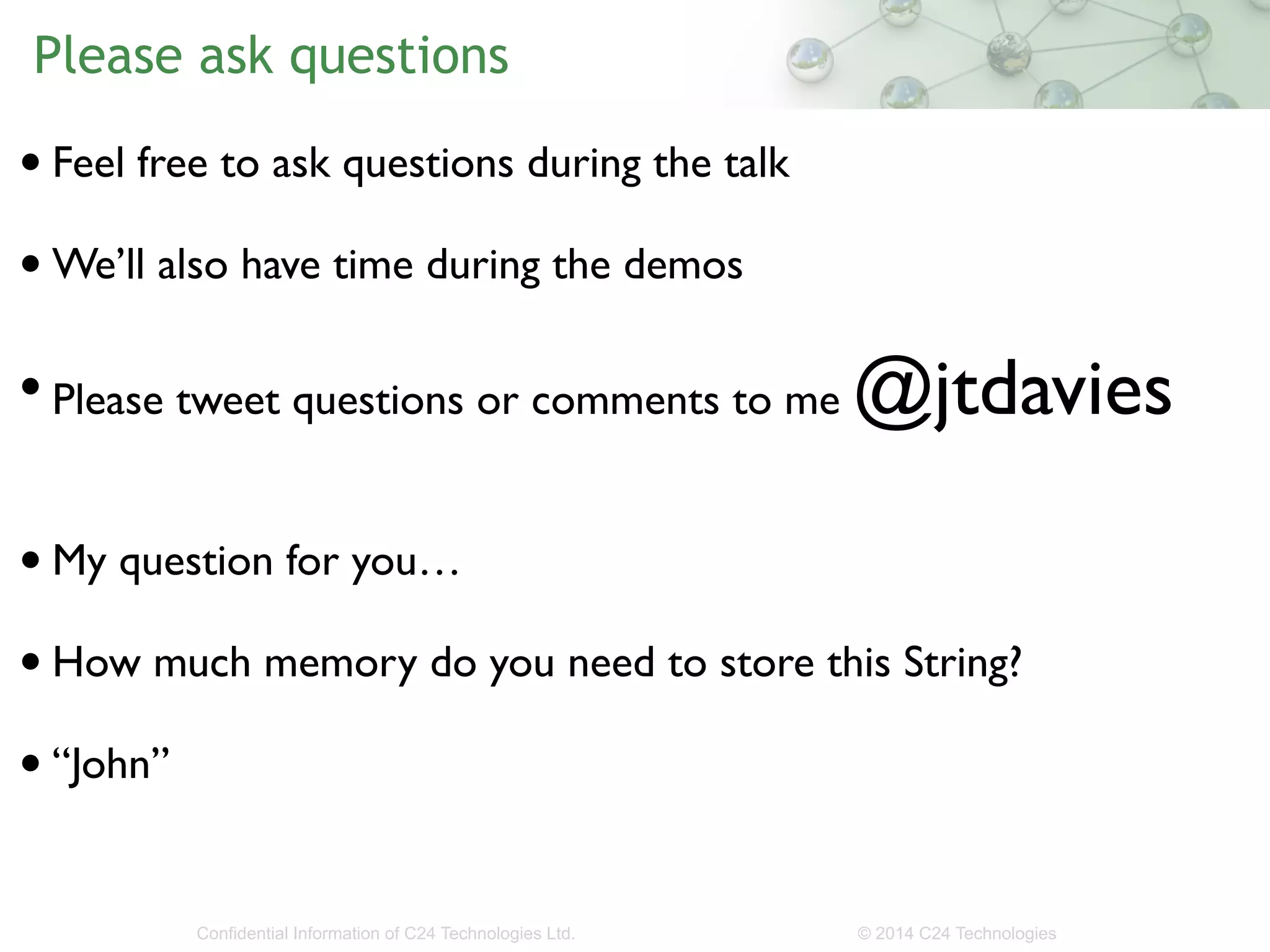
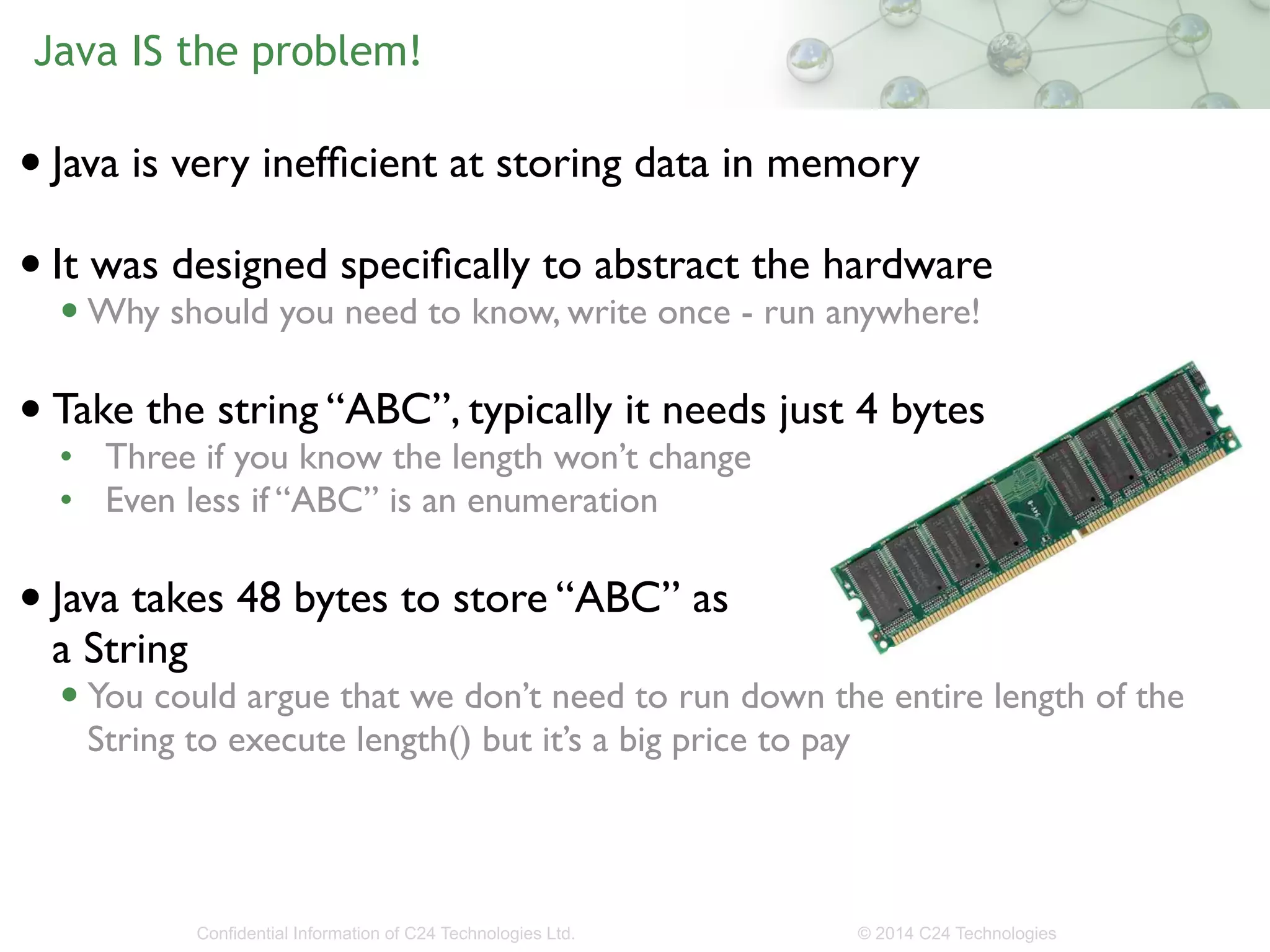
![It’s not just String • If it was just String then we could use byte[] or char[] but Java bloating is endemic • Double • BigDecimal • Date • ArrayList ! • Use just one or two and we’re OK but write a class with a few of these and we really start to see the problem ! • A class with 10 minimum sized Objects can be over 500 bytes in size - for each instance • What’s worse is that each object requires 11 separate memory allocations • All of which need managing • Which is why we have the garbage collector(s) Confidential Information of C24 Technologies Ltd. © 2014 C24 Technologies](https://image.slidesharecdn.com/turnyourxmlintobinary-javaone2014-141004120750-conversion-gate02/75/Turn-your-XML-into-binary-JavaOne-2014-4-2048.jpg)
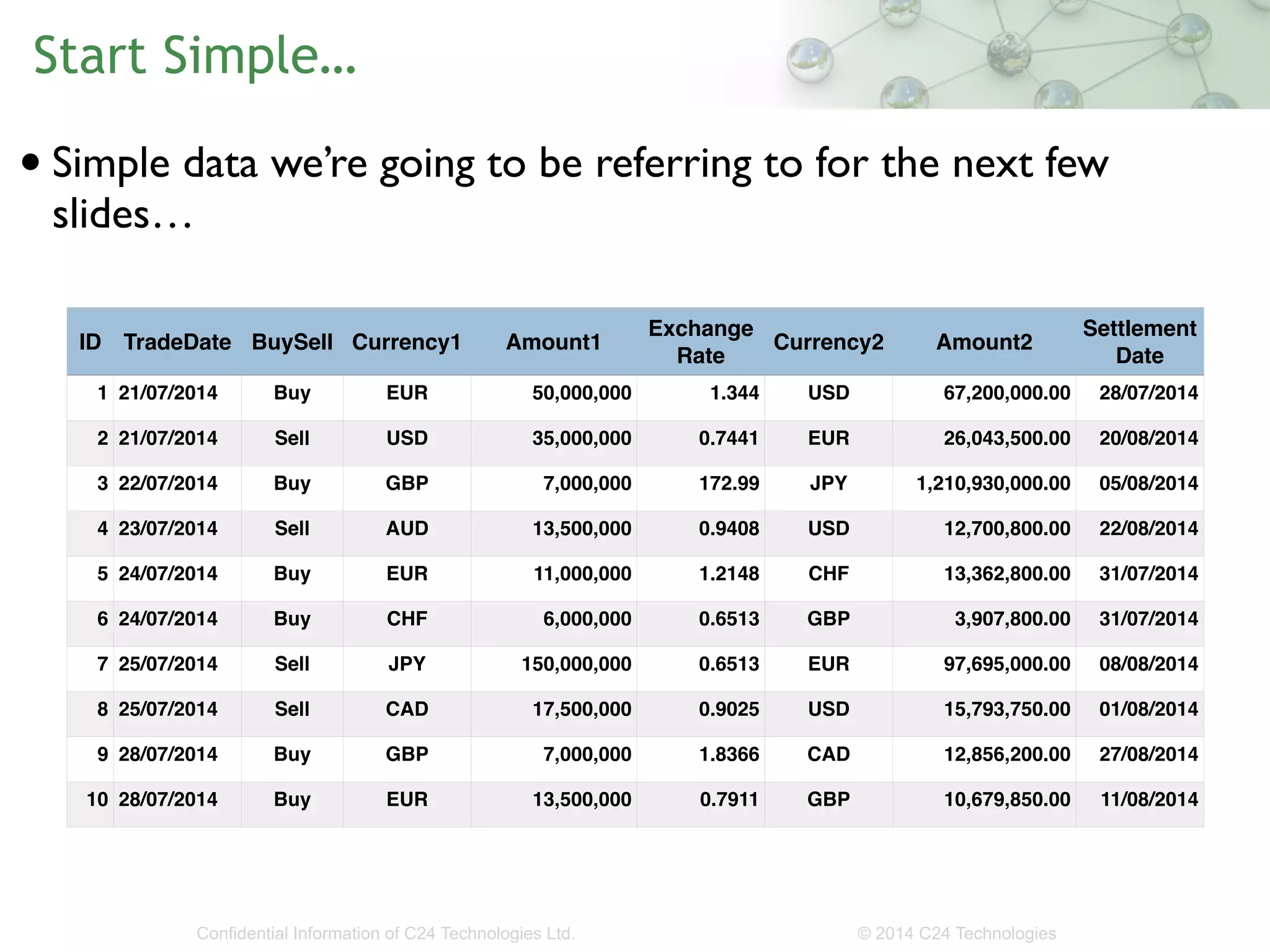


![Everything’s fine • With very simple getters and setters, something to parse the CSV and a custom toString() we’re good ! public BasicTrade parse( String line ) throws ParseException {! String[] fields = line.split(",");! setId(Long.parseLong(fields[0]));! setTradeDate(DATE_FORMAT.get().parse(fields[1]));! setBuySell(fields[2]);! setCurrency1(fields[3]);! setAmount1(new BigDecimal(fields[4]));! setExchangeRate(Double.parseDouble(fields[5]));! setCurrency2(fields[6]);! setAmount2(new BigDecimal(fields[7]));! setSettlementDate(DATE_FORMAT.get().parse(fields[8]));! Confidential Information of C24 Technologies Ltd. © 2014 C24 Technologies ! return this;! }! !• What could possibly go wrong?](https://image.slidesharecdn.com/turnyourxmlintobinary-javaone2014-141004120750-conversion-gate02/75/Turn-your-XML-into-binary-JavaOne-2014-8-2048.jpg)
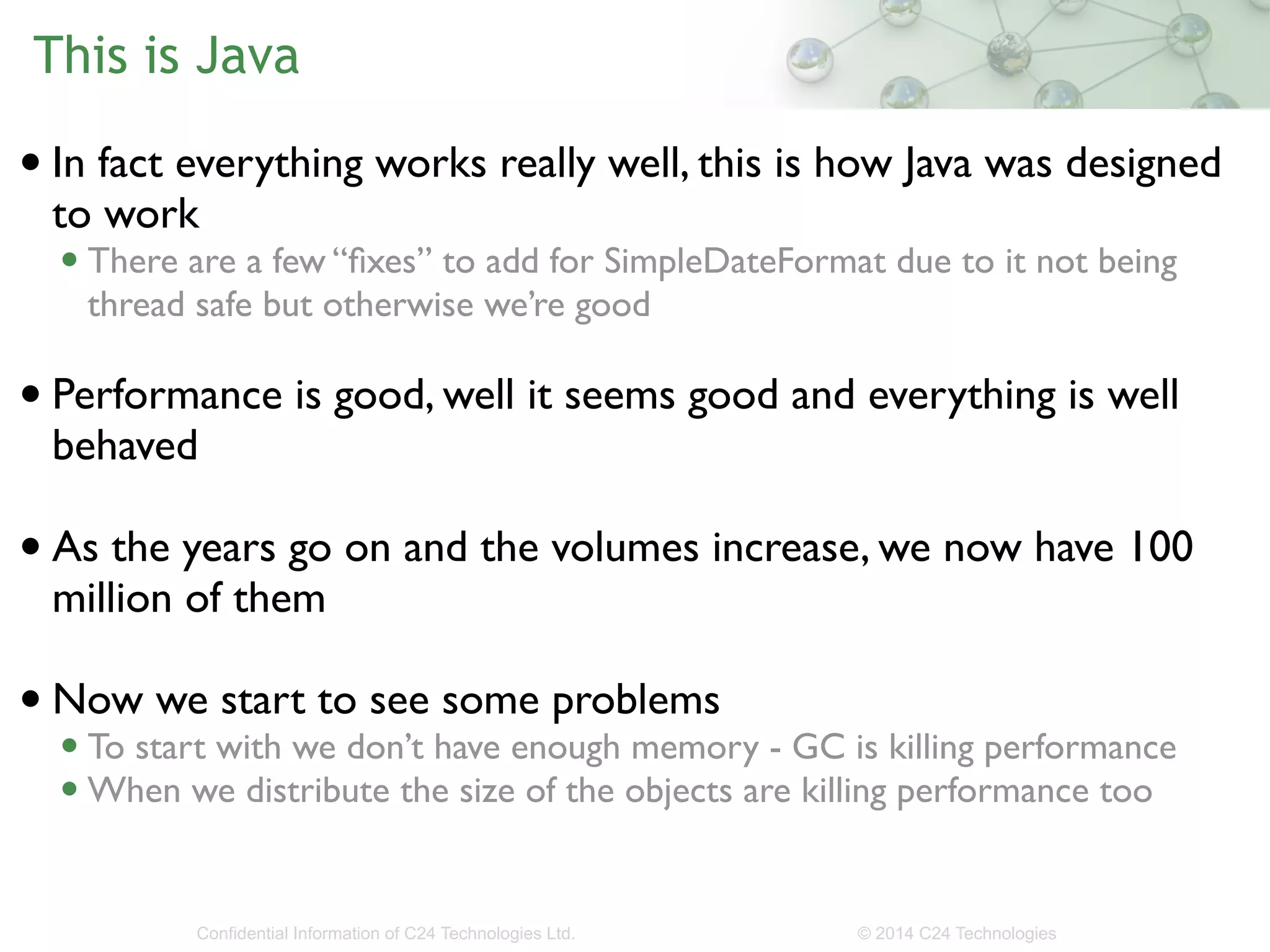

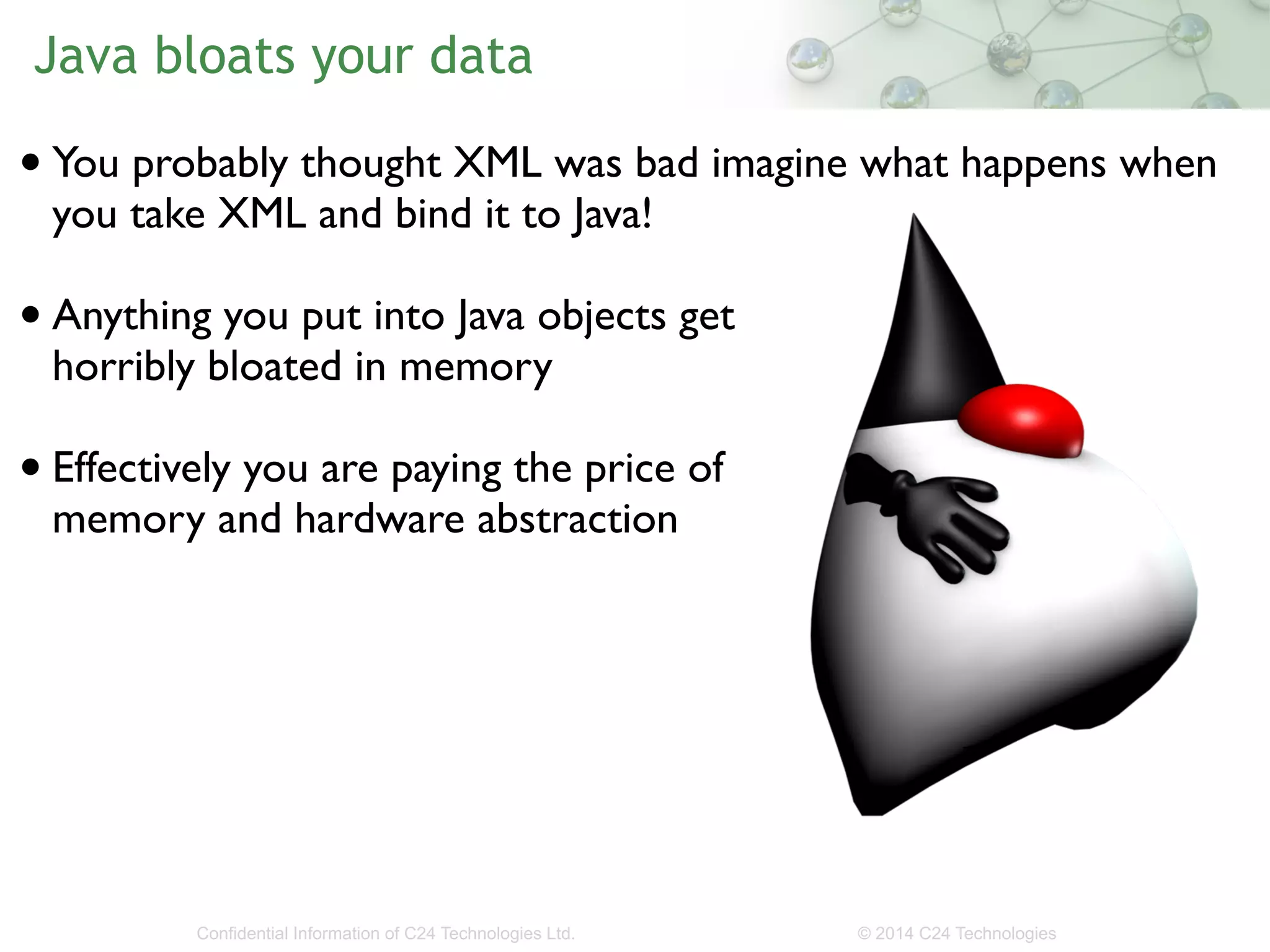

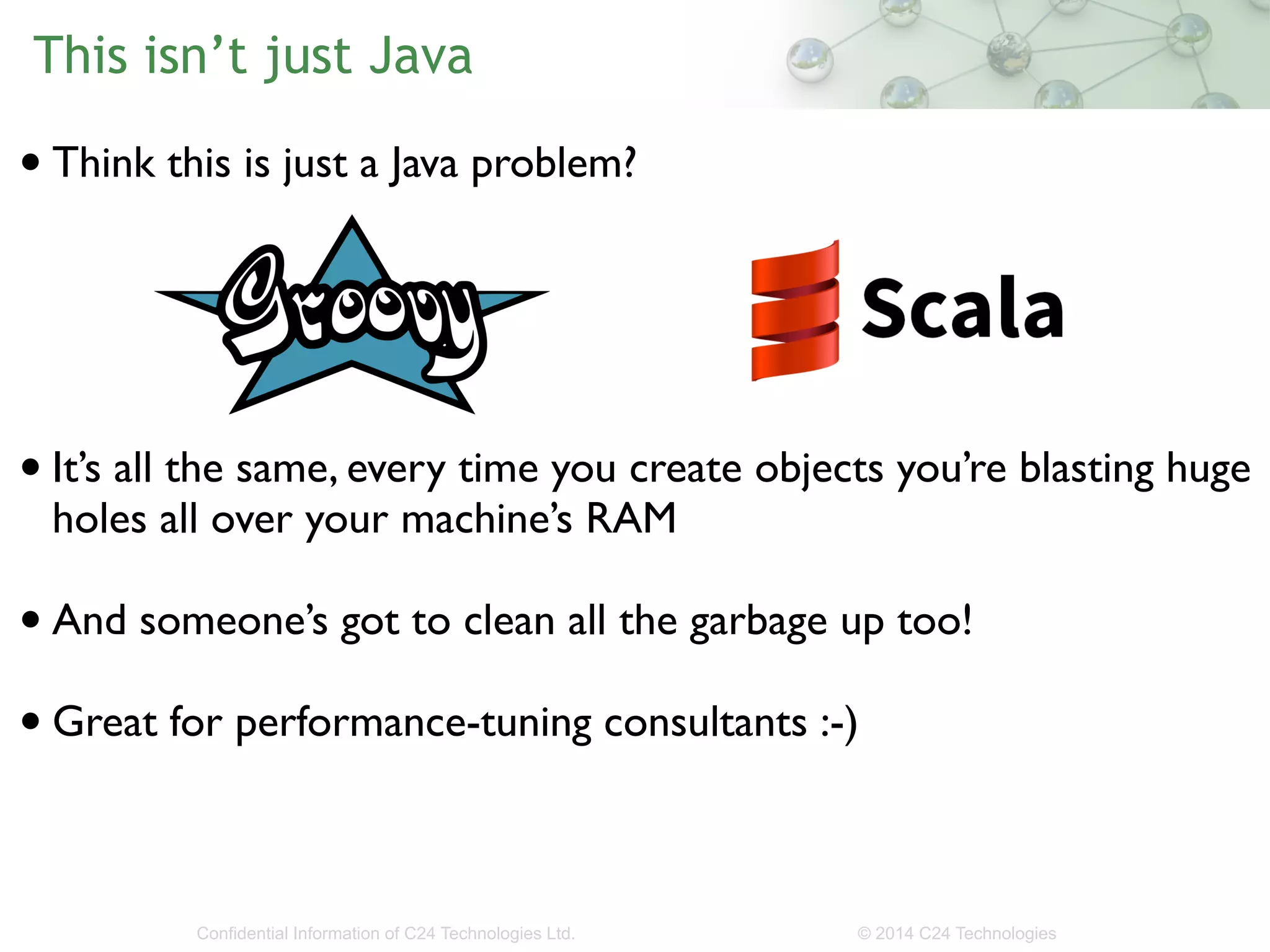
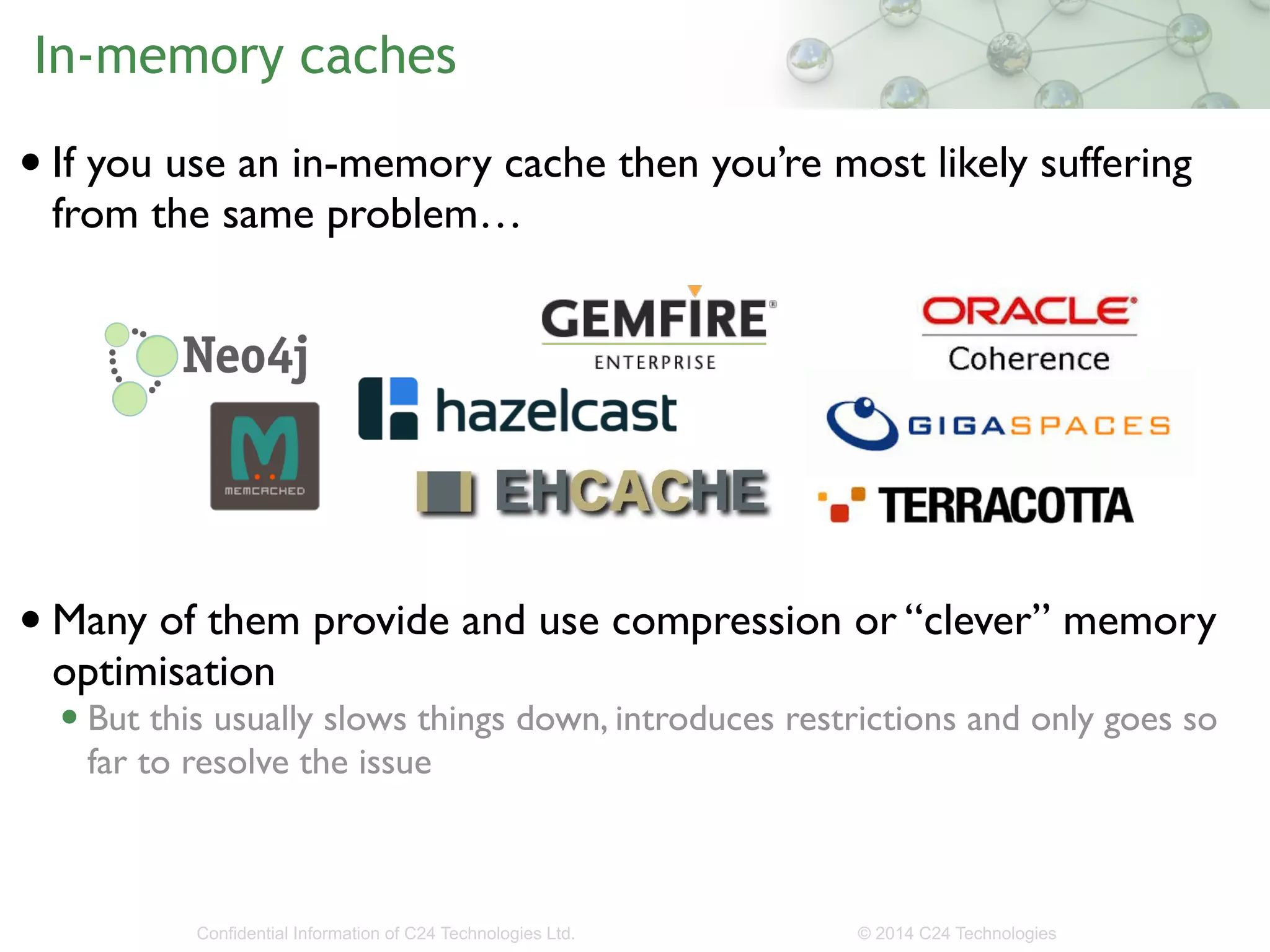
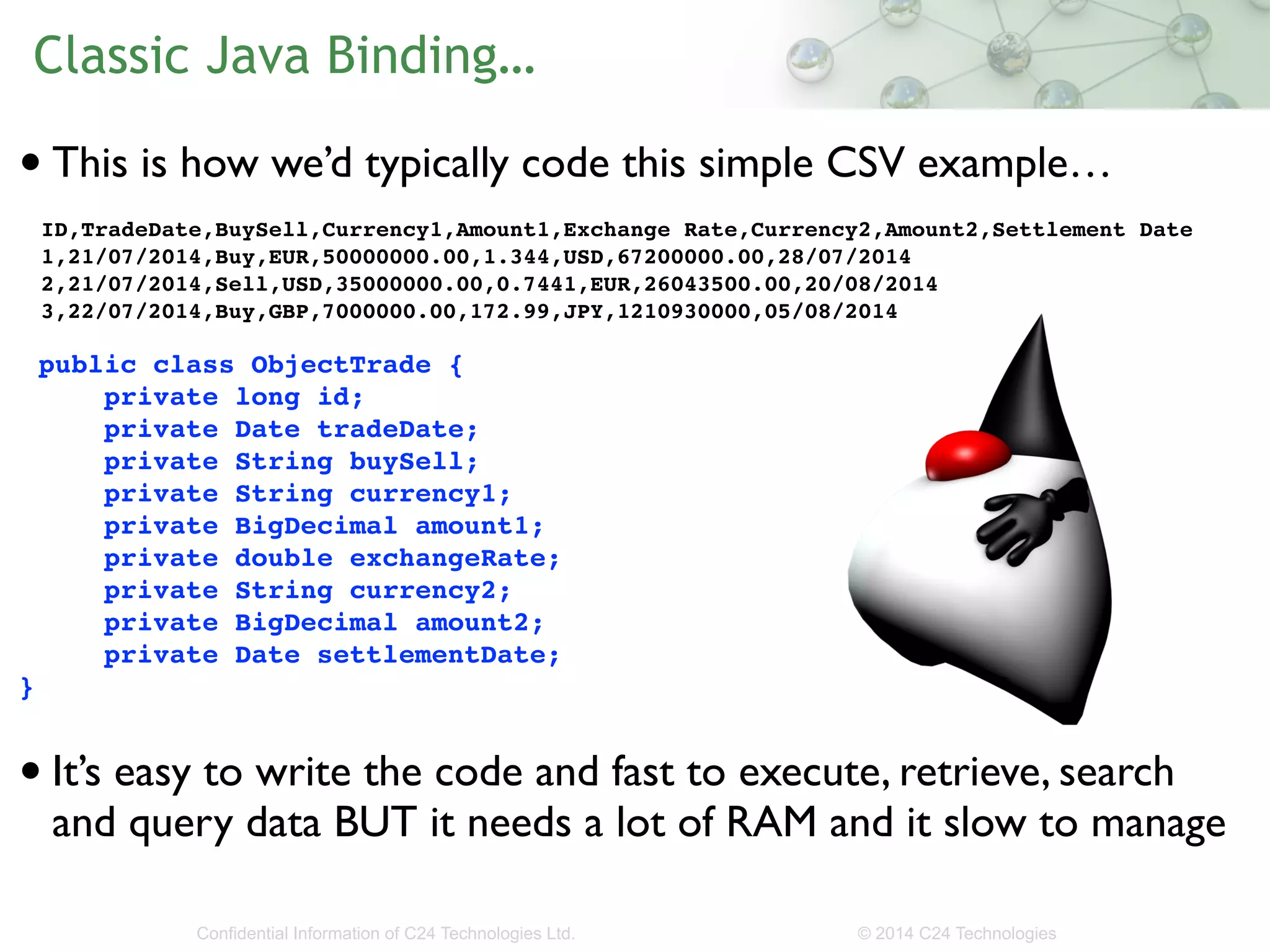

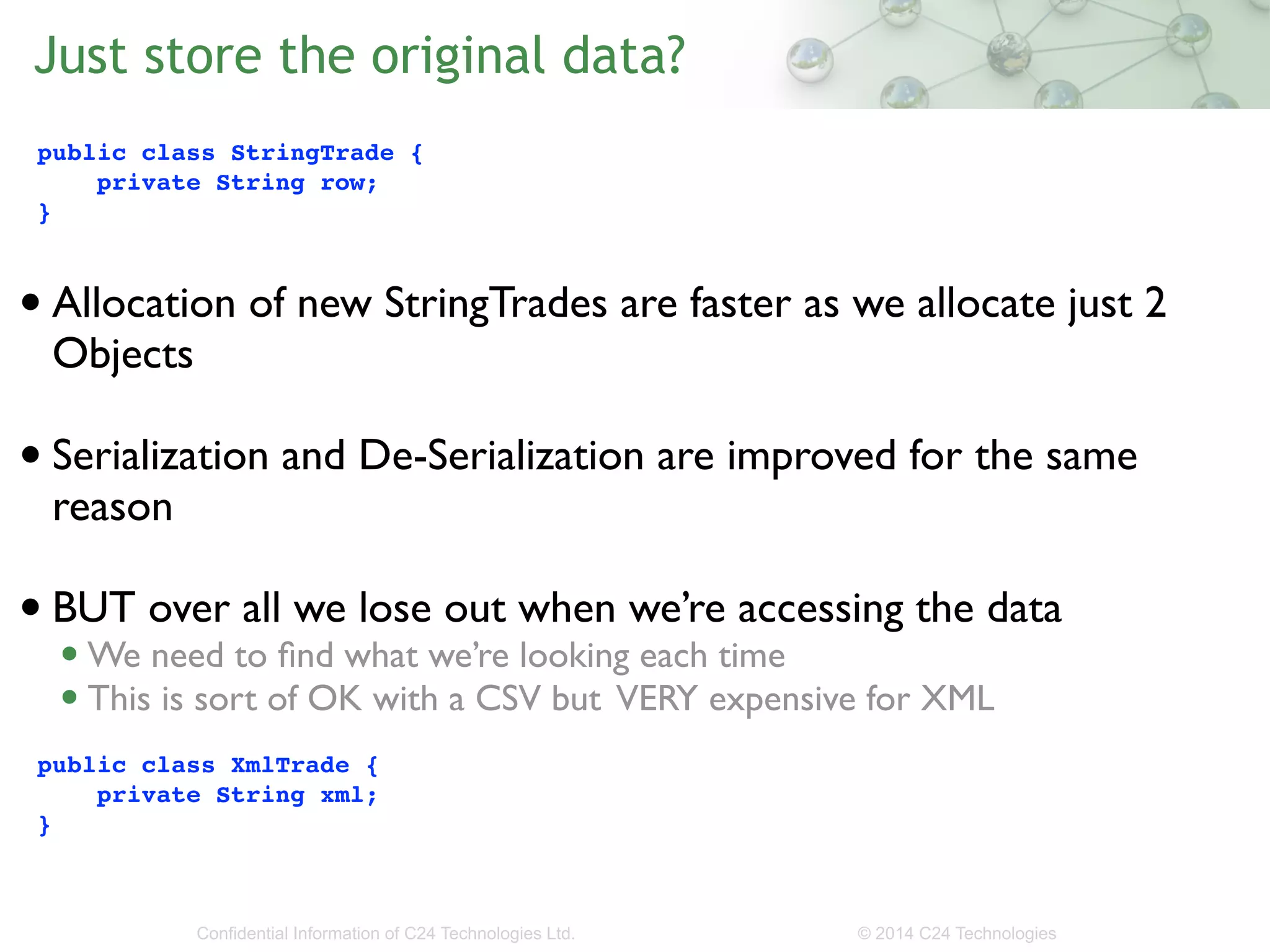
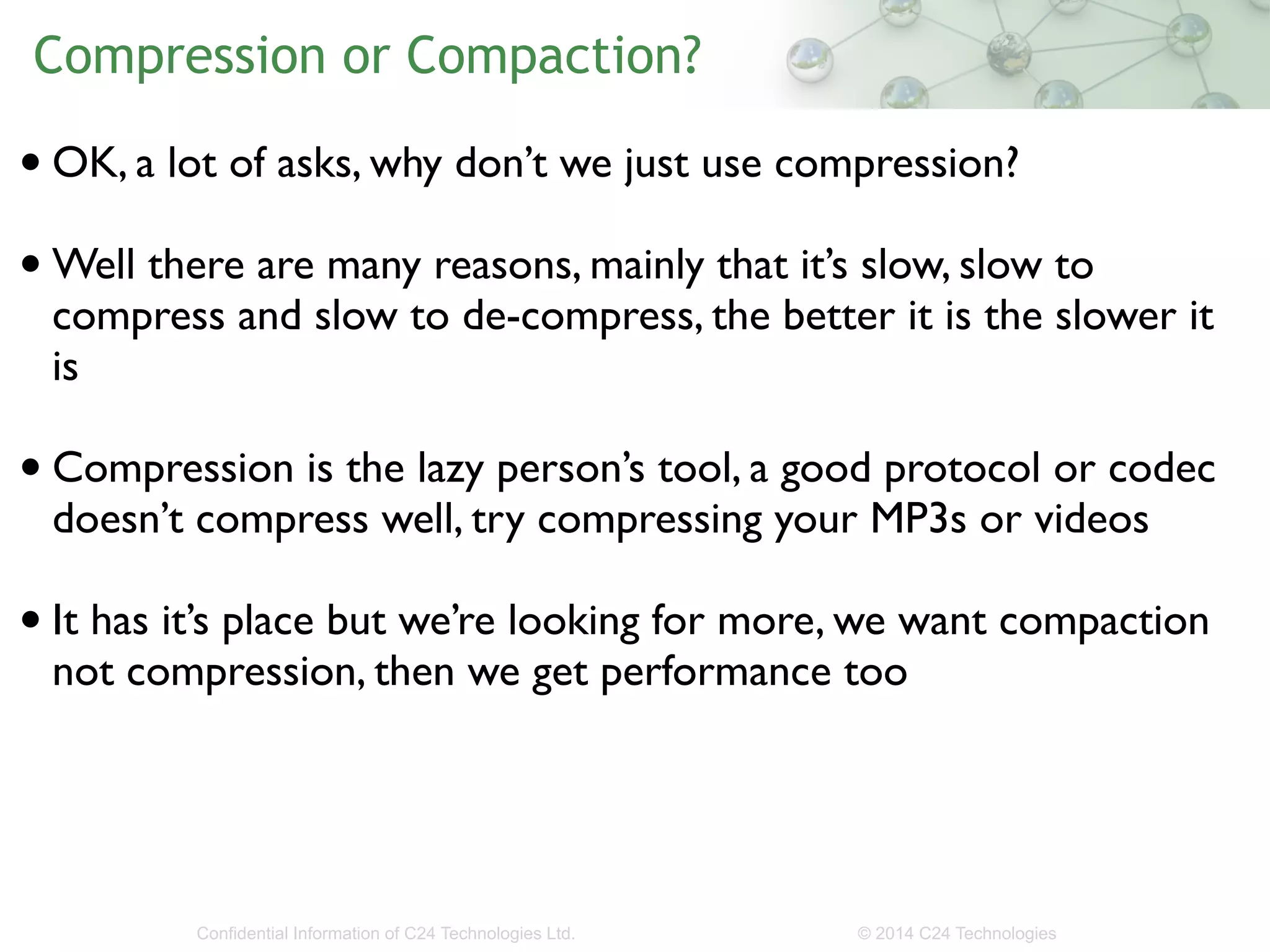
![Now in binary… • This is what our binary version looks like… ! ID,TradeDate,BuySell,Currency1,Amount1,Exchange Rate,Currency2,Amount2,Settlement Date! 1,21/07/2014,Buy,EUR,50000000.00,1.344,USD,67200000.00,28/07/2014! 2,21/07/2014,Sell,USD,35000000.00,0.7441,EUR,26043500.00,20/08/2014! 3,22/07/2014,Buy,GBP,7000000.00,172.99,JPY,1210930000,05/08/2014! Confidential Information of C24 Technologies Ltd. © 2014 C24 Technologies ! public class ObjectTrade extends SDO { private byte[] data;! }! ! • Just one object again so fast to allocate ! • If we can encode the data in the binary then it’s fast to query too ! • And serialisation is just writing out the byte[]](https://image.slidesharecdn.com/turnyourxmlintobinary-javaone2014-141004120750-conversion-gate02/75/Turn-your-XML-into-binary-JavaOne-2014-19-2048.jpg)
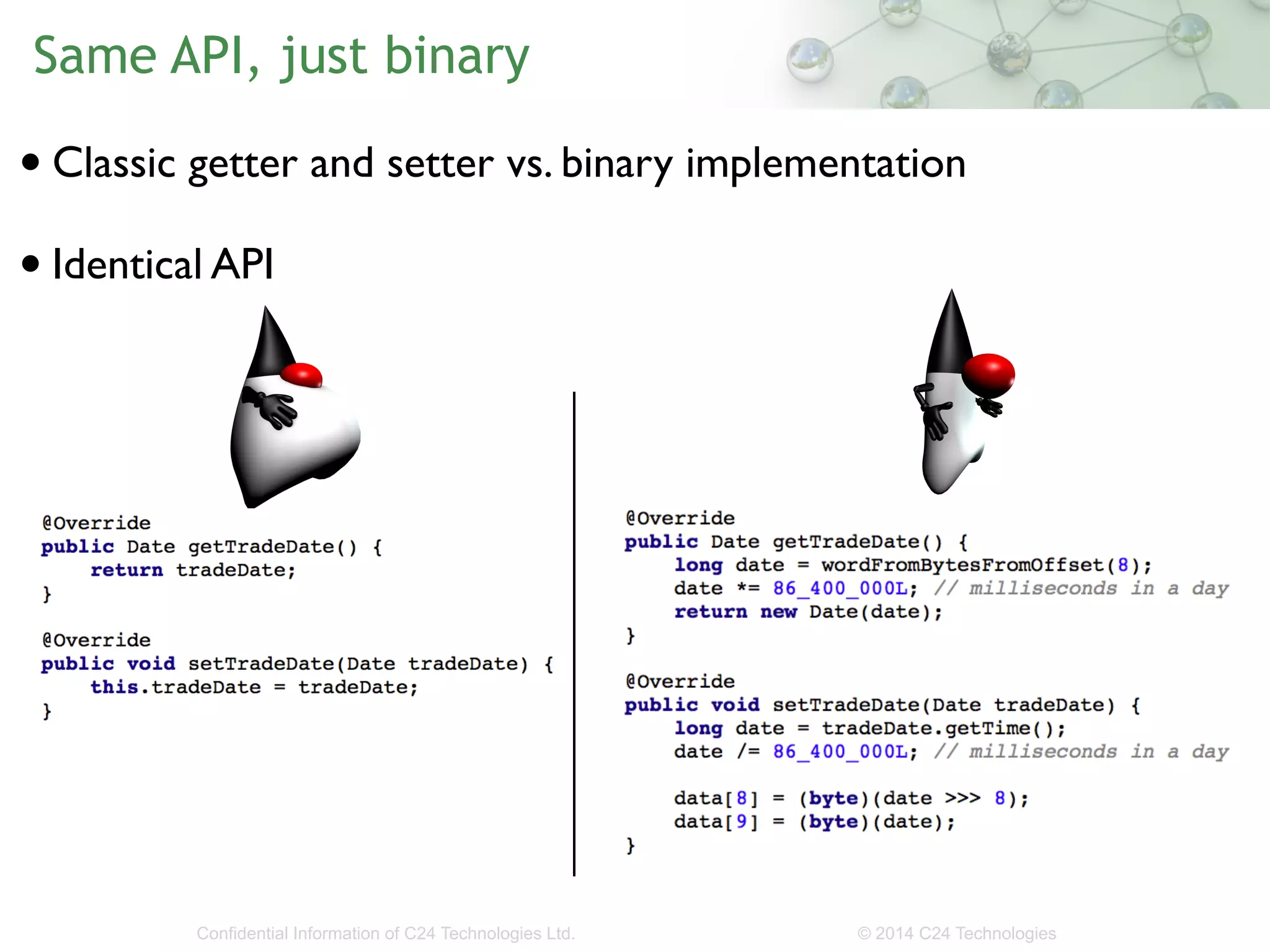
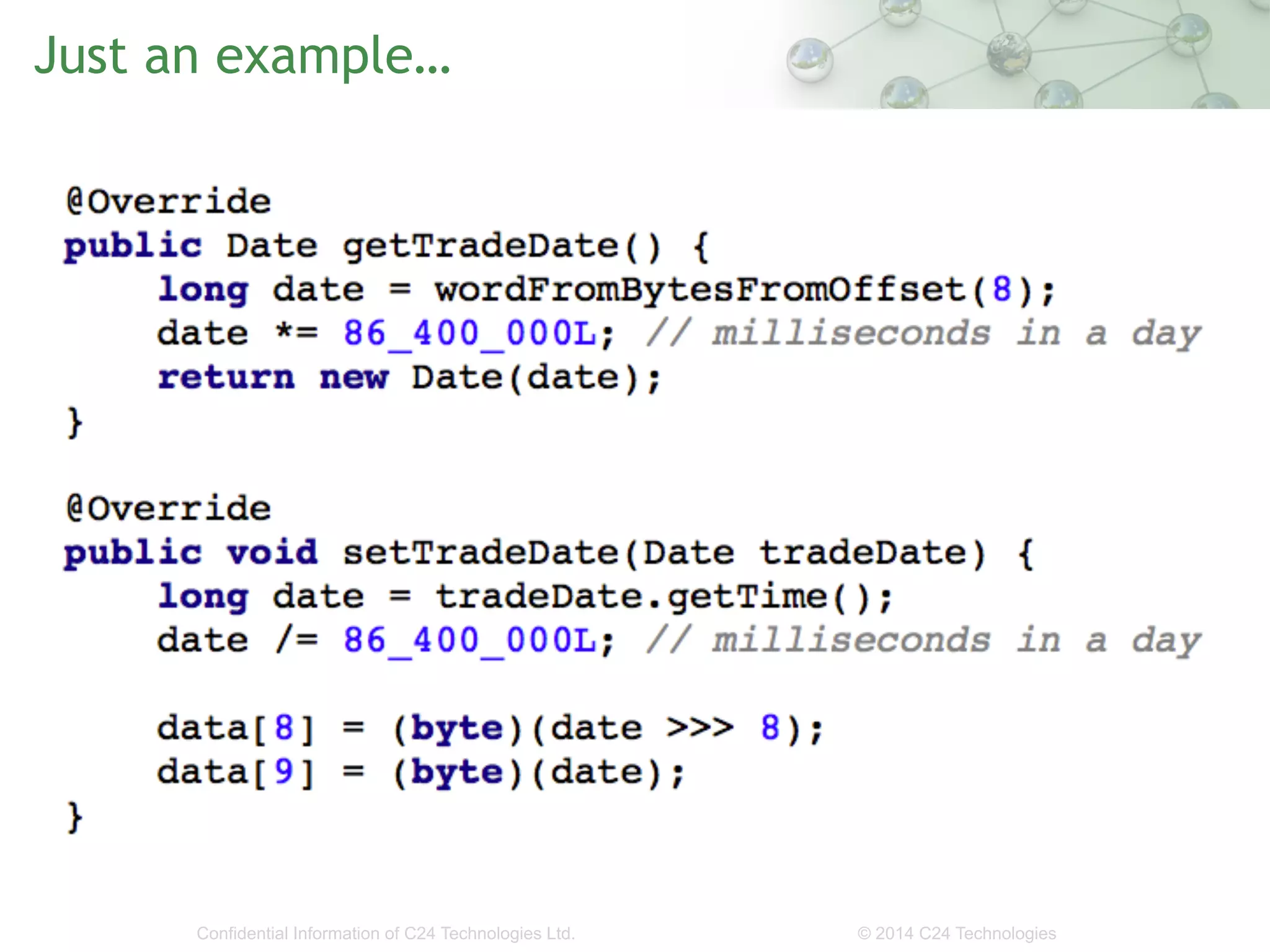
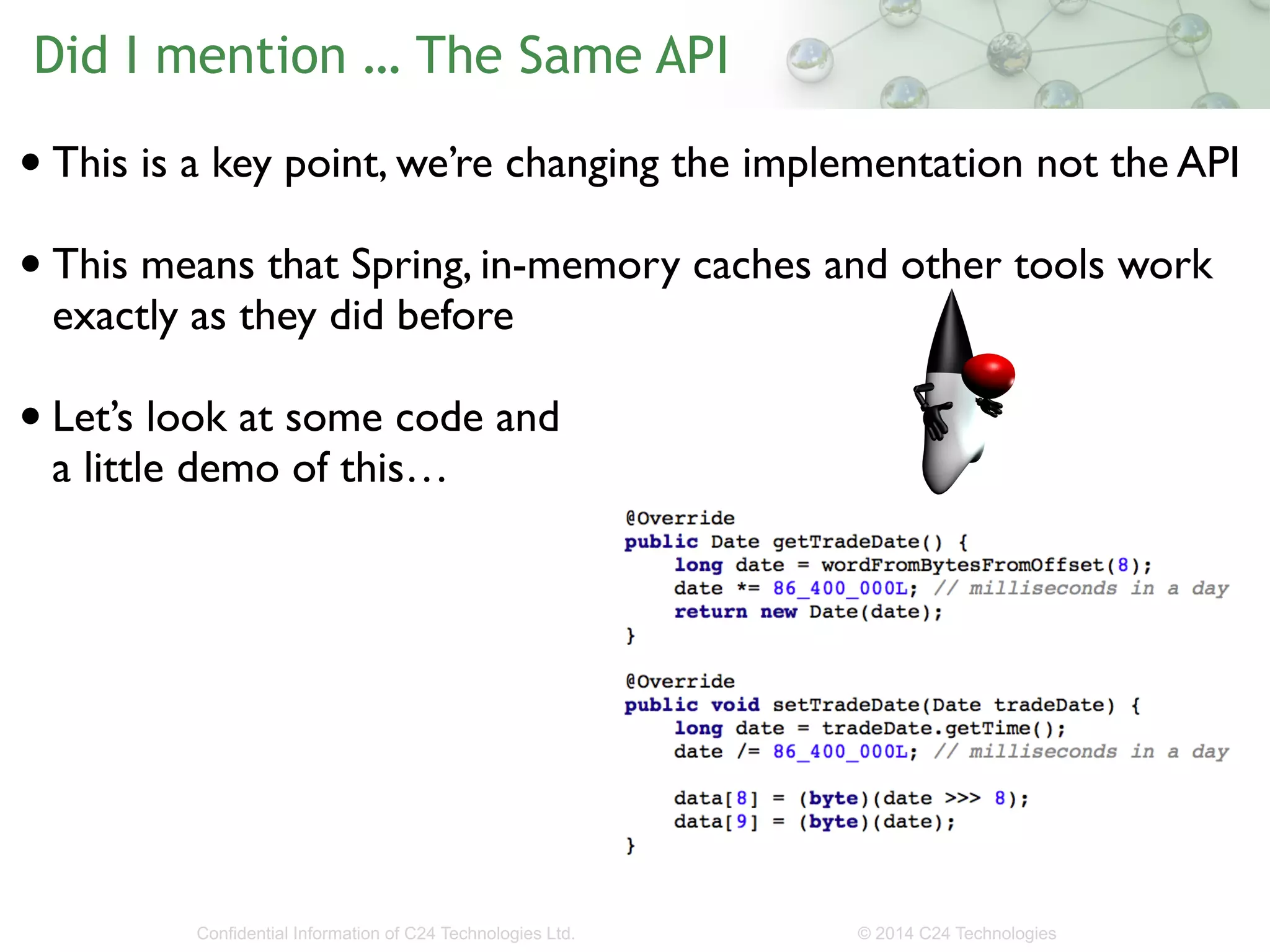
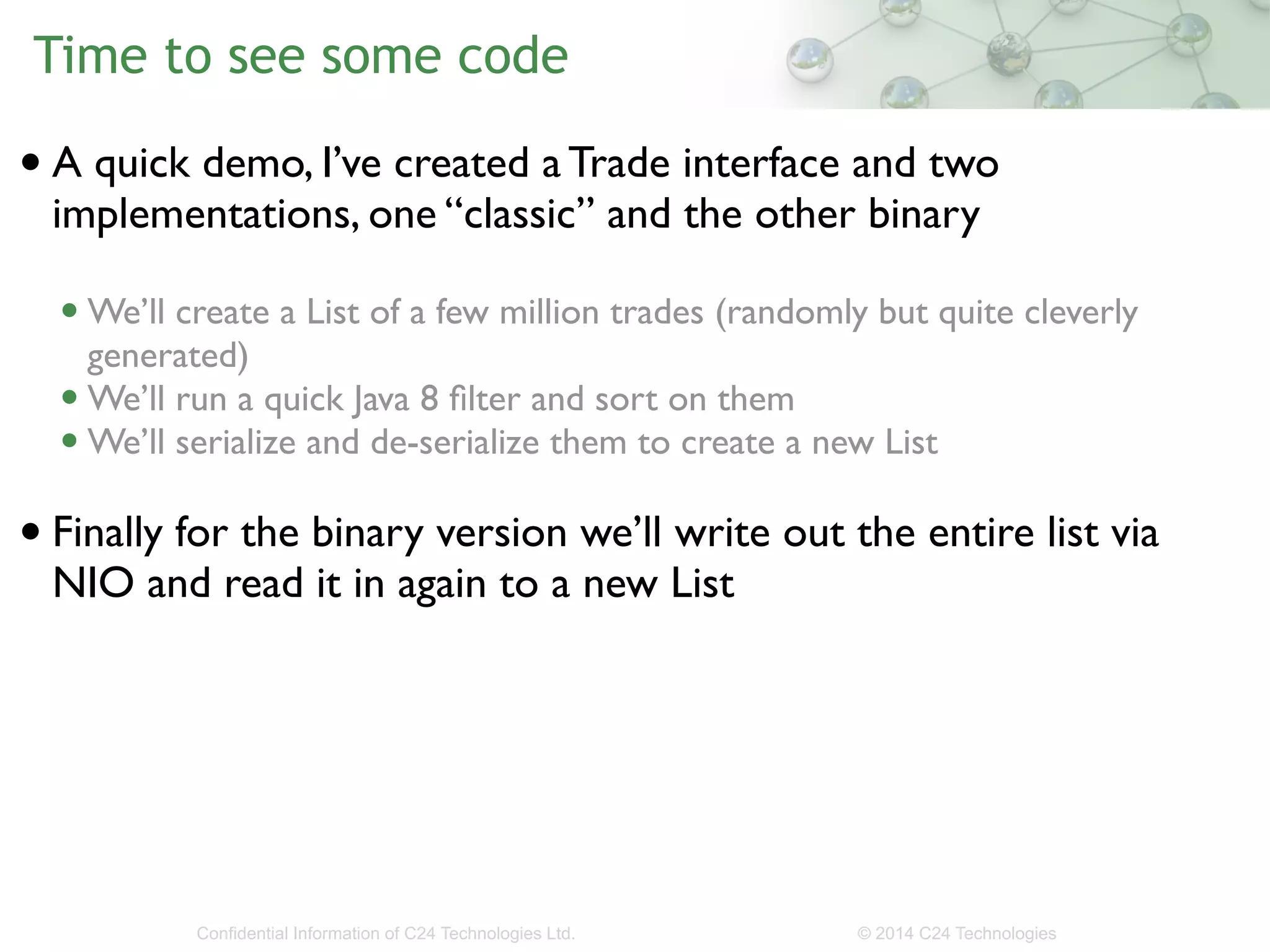
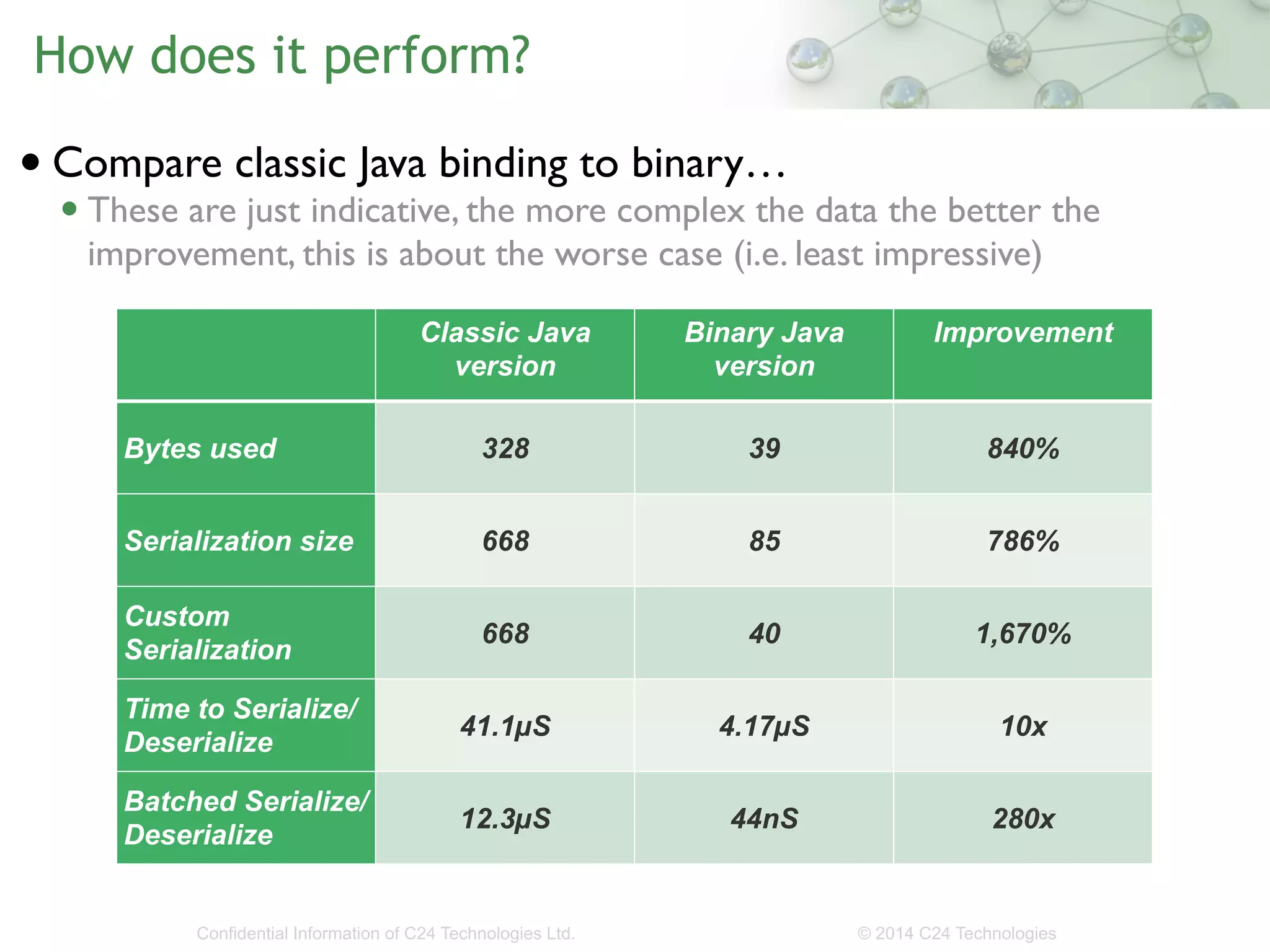
![Batching & Mechanical sympathy • You probably noticed that the actual byte[] size was 39 but Java used 48 bytes per instance ! • By batching and creating batch classes that handle the large numbers of instances not as a List or Array but more tightly we can get further improvements in memory and performance ! • 1 million messages or 39 bytes should be exactly 39,000,000 bytes • As things get more complex the message size varies and we often have to compromise with a larger batch quanta •We usually have to stick to 8 byte chunks too ! • To do this safely we’d probably have to use something like 48 bytes per instance in this example Confidential Information of C24 Technologies Ltd. © 2014 C24 Technologies](https://image.slidesharecdn.com/turnyourxmlintobinary-javaone2014-141004120750-conversion-gate02/75/Turn-your-XML-into-binary-JavaOne-2014-25-2048.jpg)



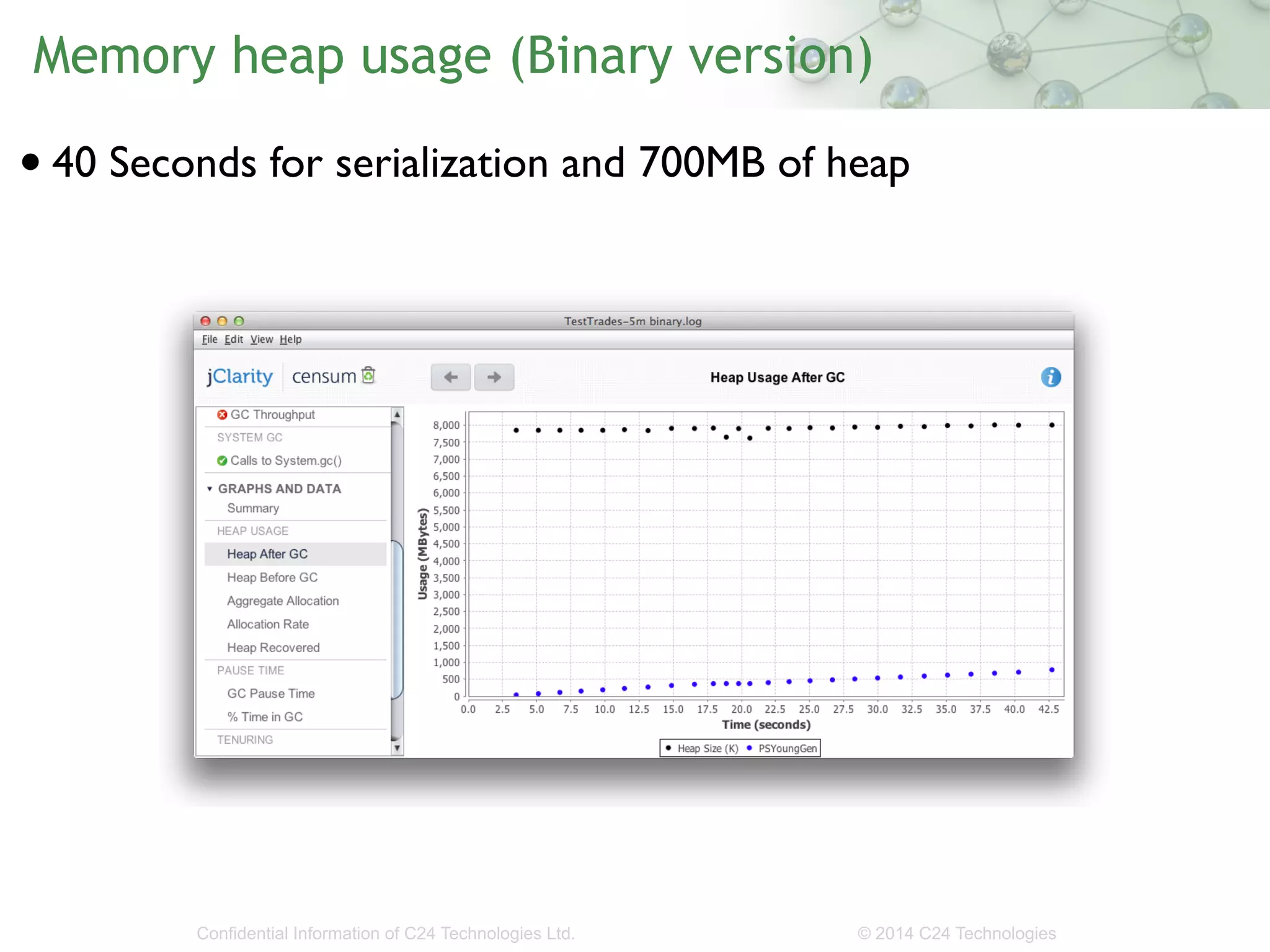

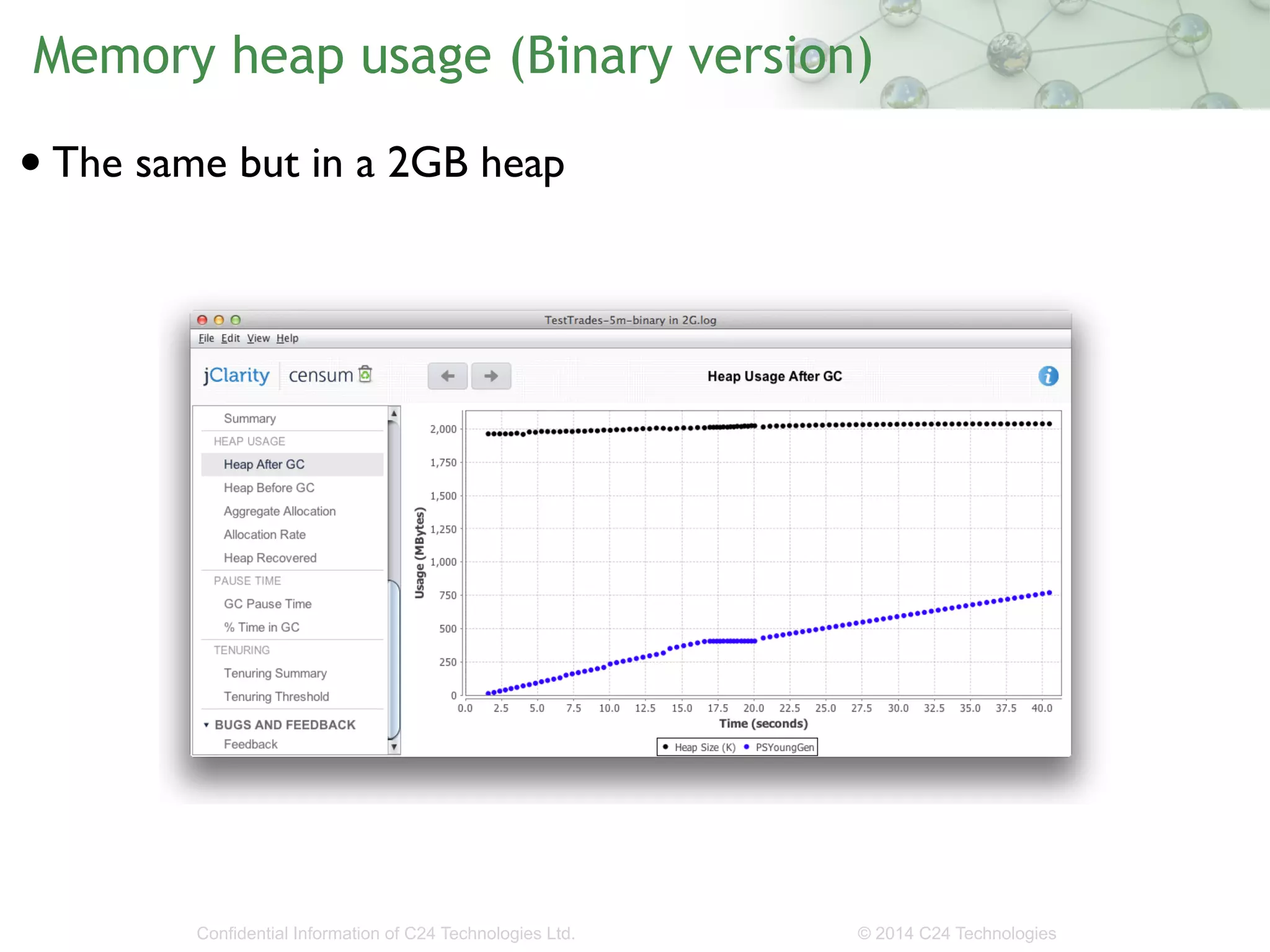
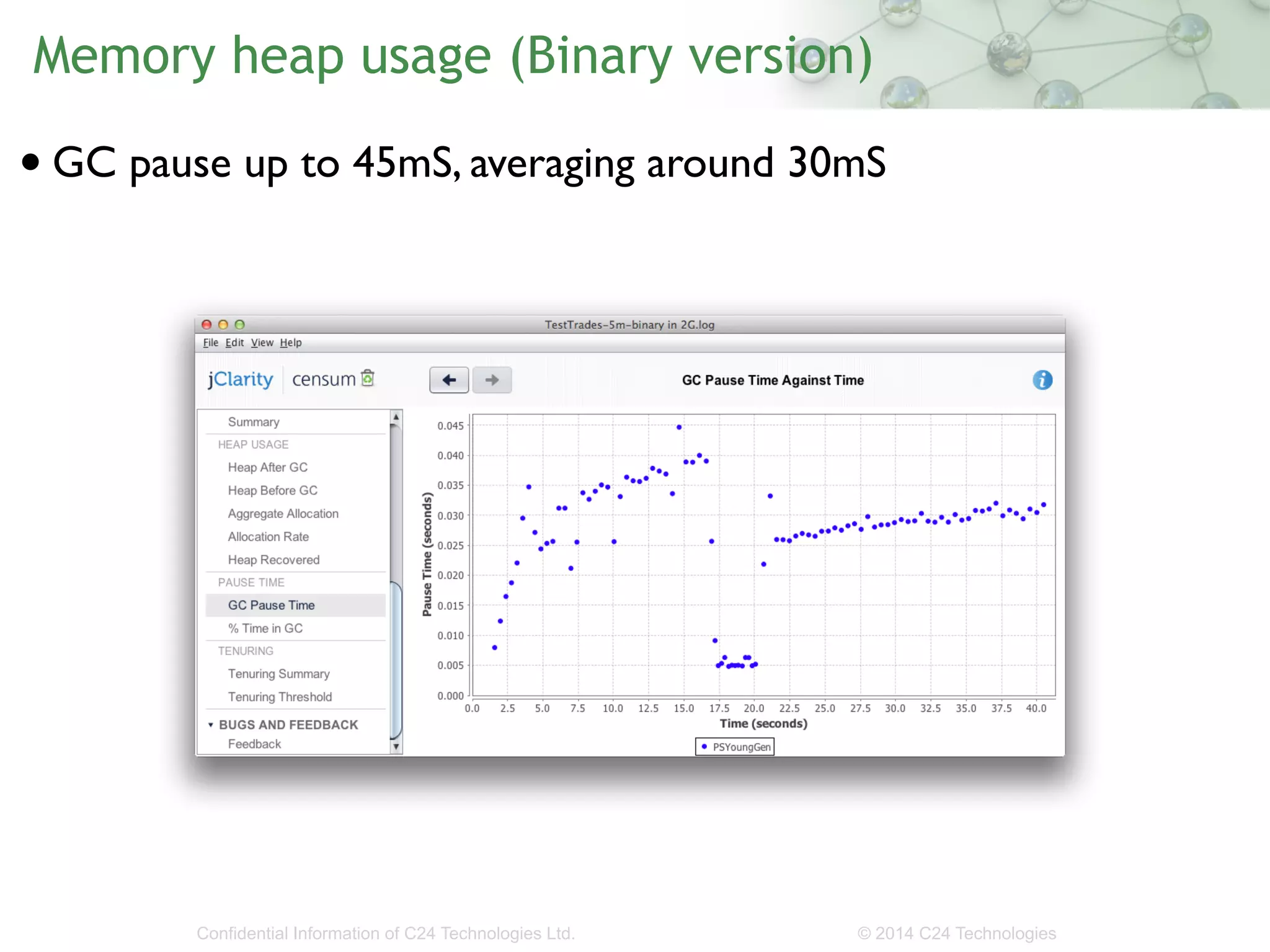
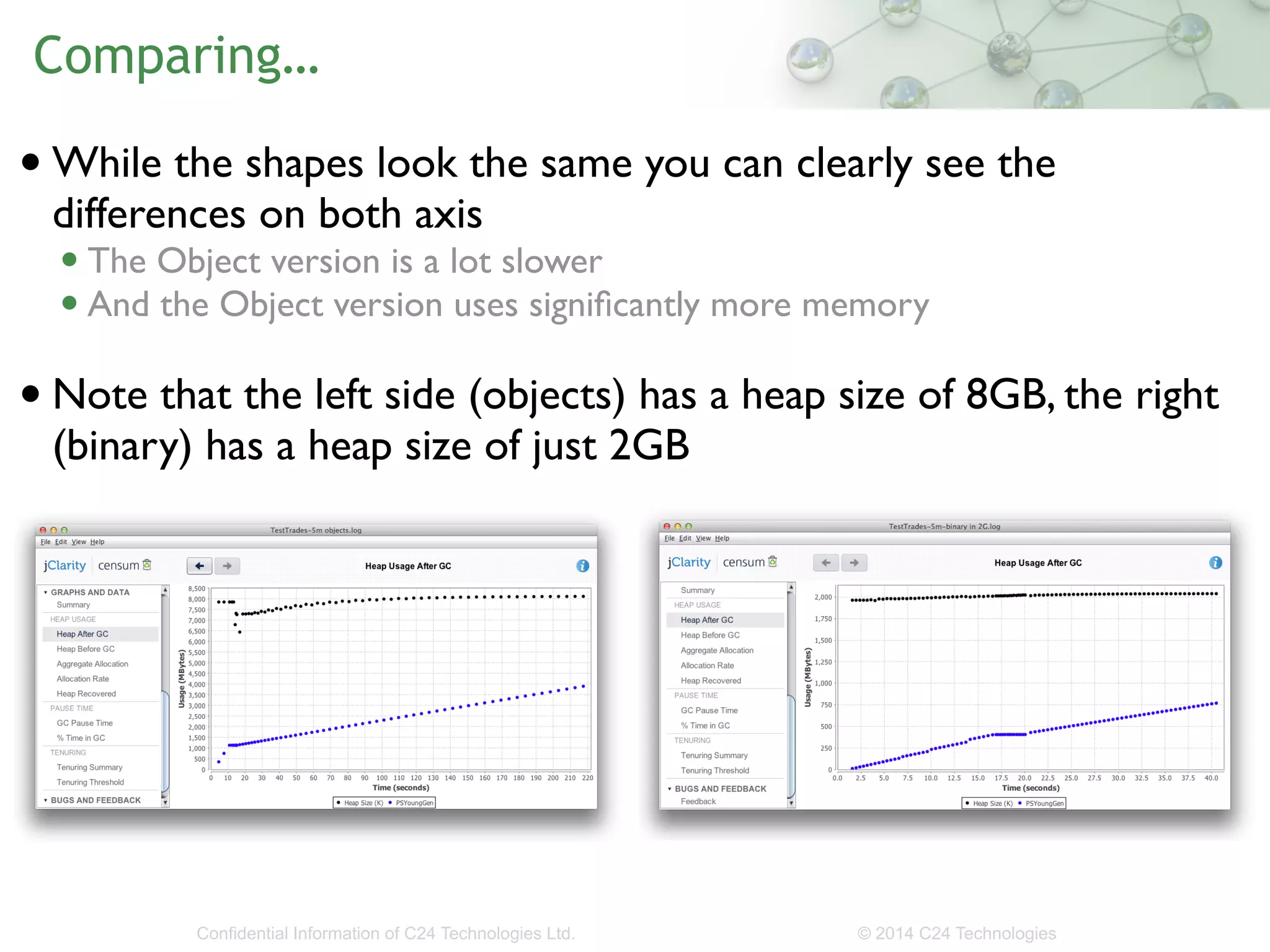
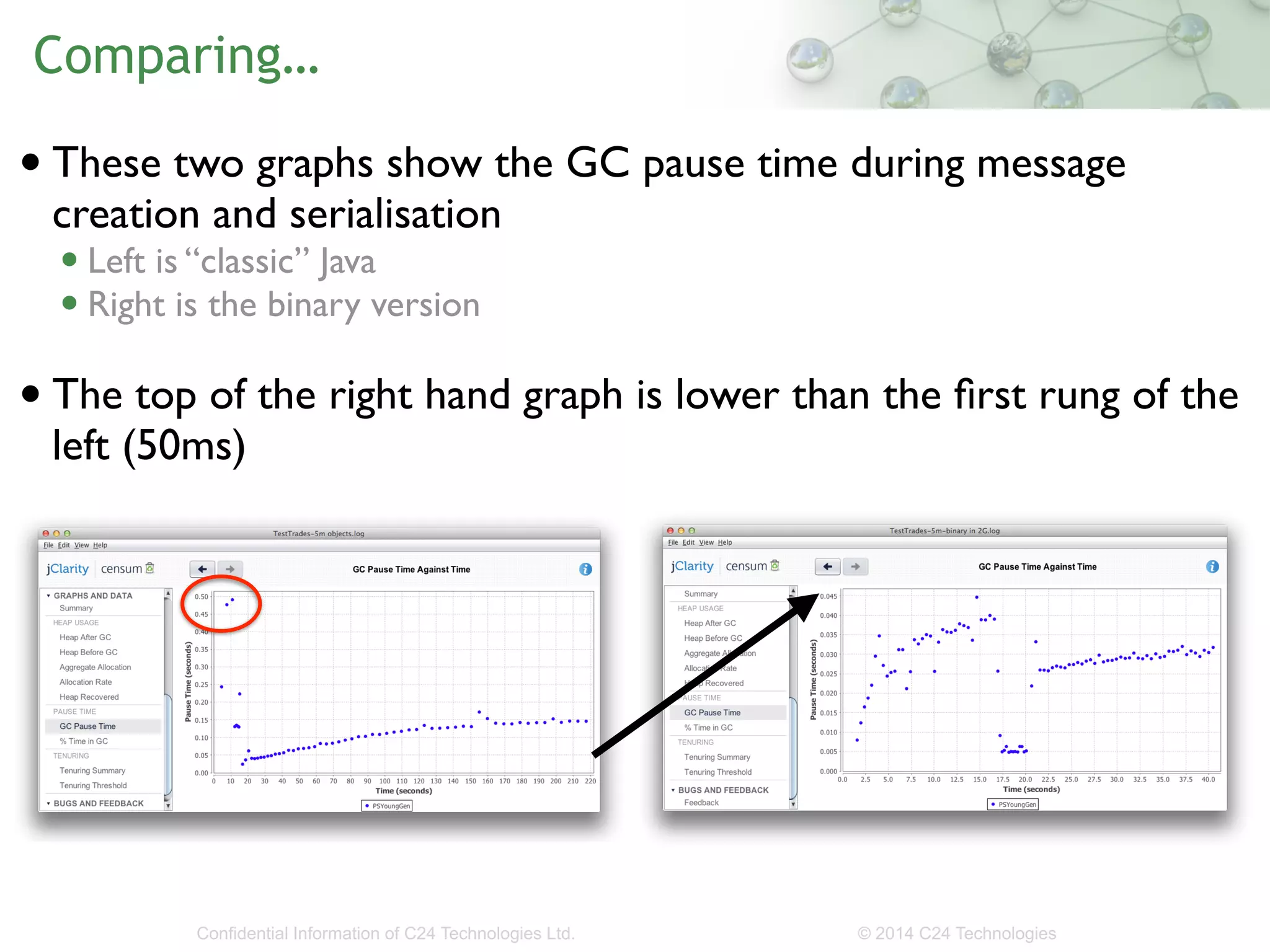

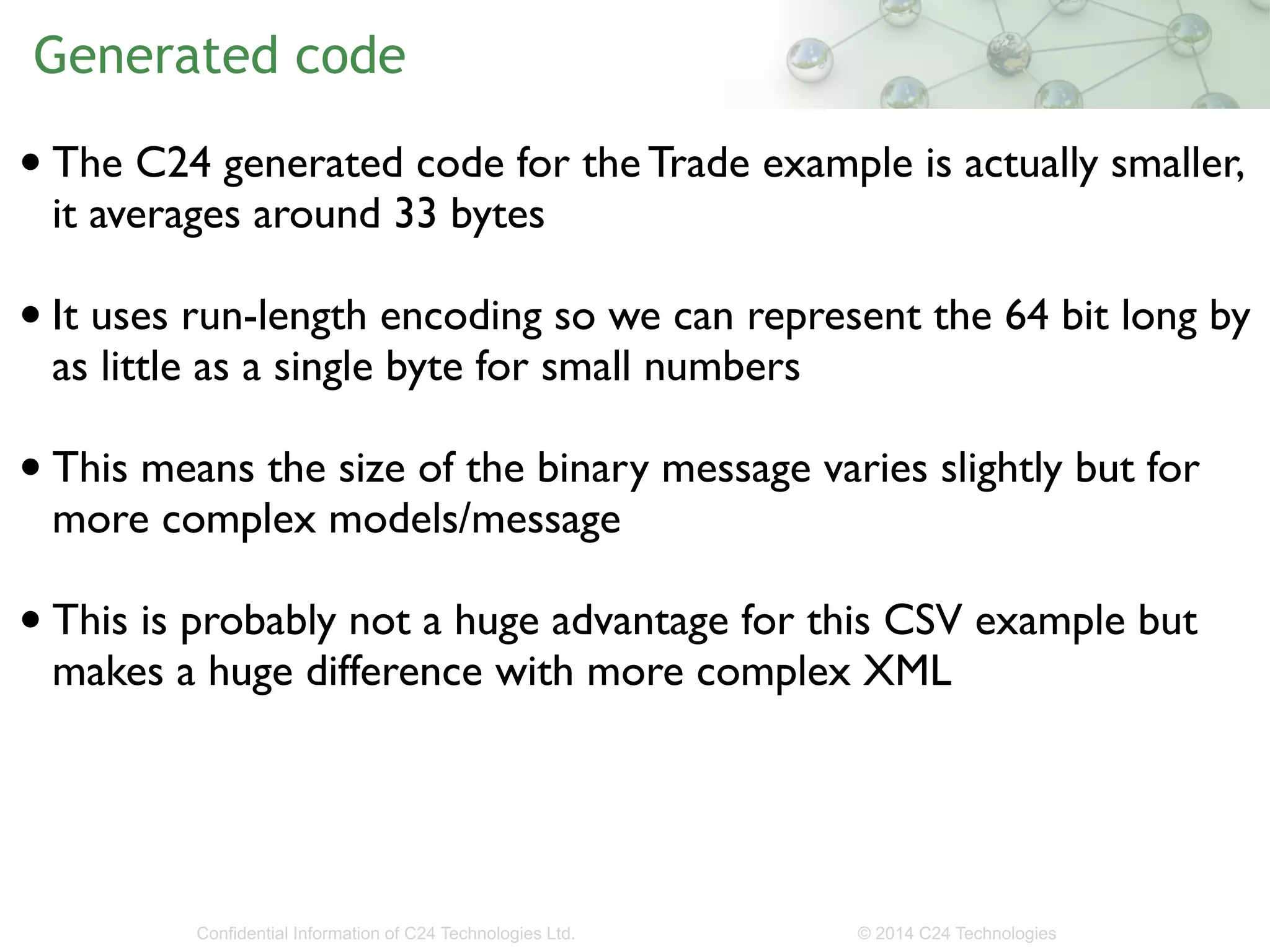
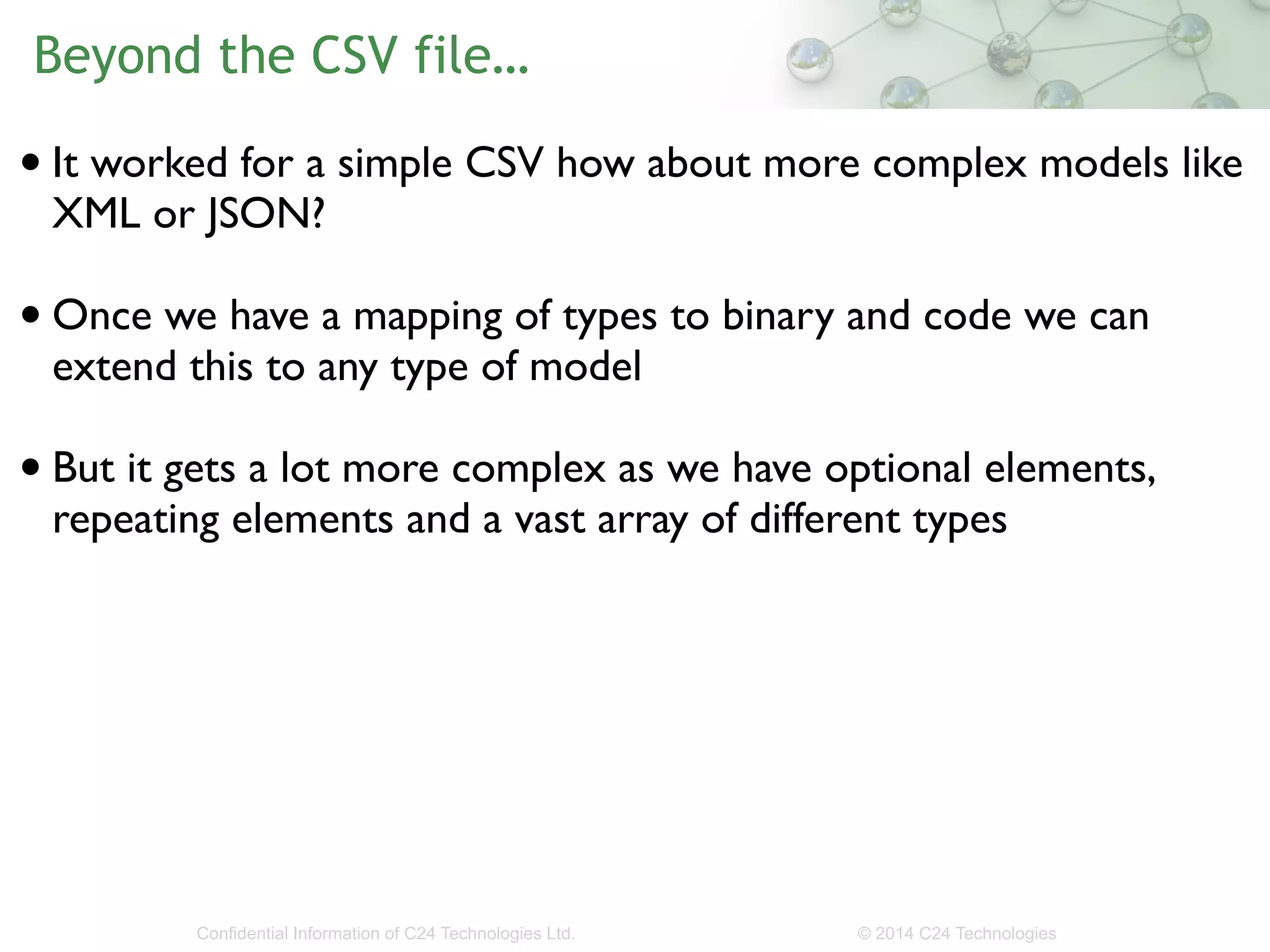

![Our Java Binding <resetFrequency> <periodMultiplier>6</periodMultiplier> <period>M</period> </resetFrequency> ! • Using C24’s SDO binary codec we generate … ! ByteBuffer data; // From the root object public BigInteger getPeriodMultiplier() { int byteOffset = 123; // Actually a lot more complex return BigInteger.valueOf( data.get(byteOffset) & 0x1F ); } // constructors & other getters • In memory -1 byte for all three fields • The root contains one ByteBuffer which is a wrapper for byte[] • The getters use bit-fields, Period is just 3 bits for values D, W, M, Q or Y Confidential Information of C24 Technologies Ltd. © 2014 C24 Technologies](https://image.slidesharecdn.com/turnyourxmlintobinary-javaone2014-141004120750-conversion-gate02/75/Turn-your-XML-into-binary-JavaOne-2014-39-2048.jpg)
